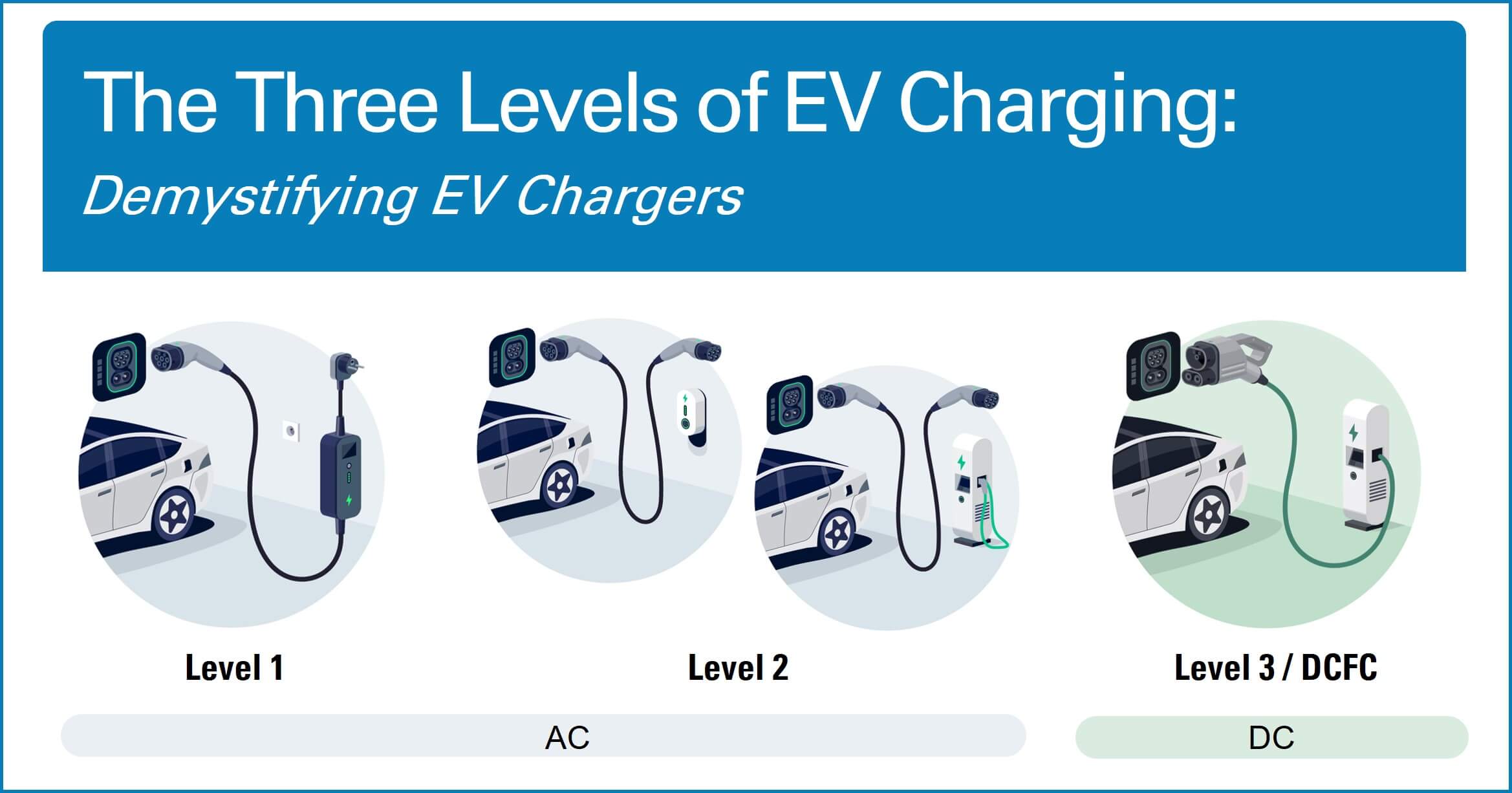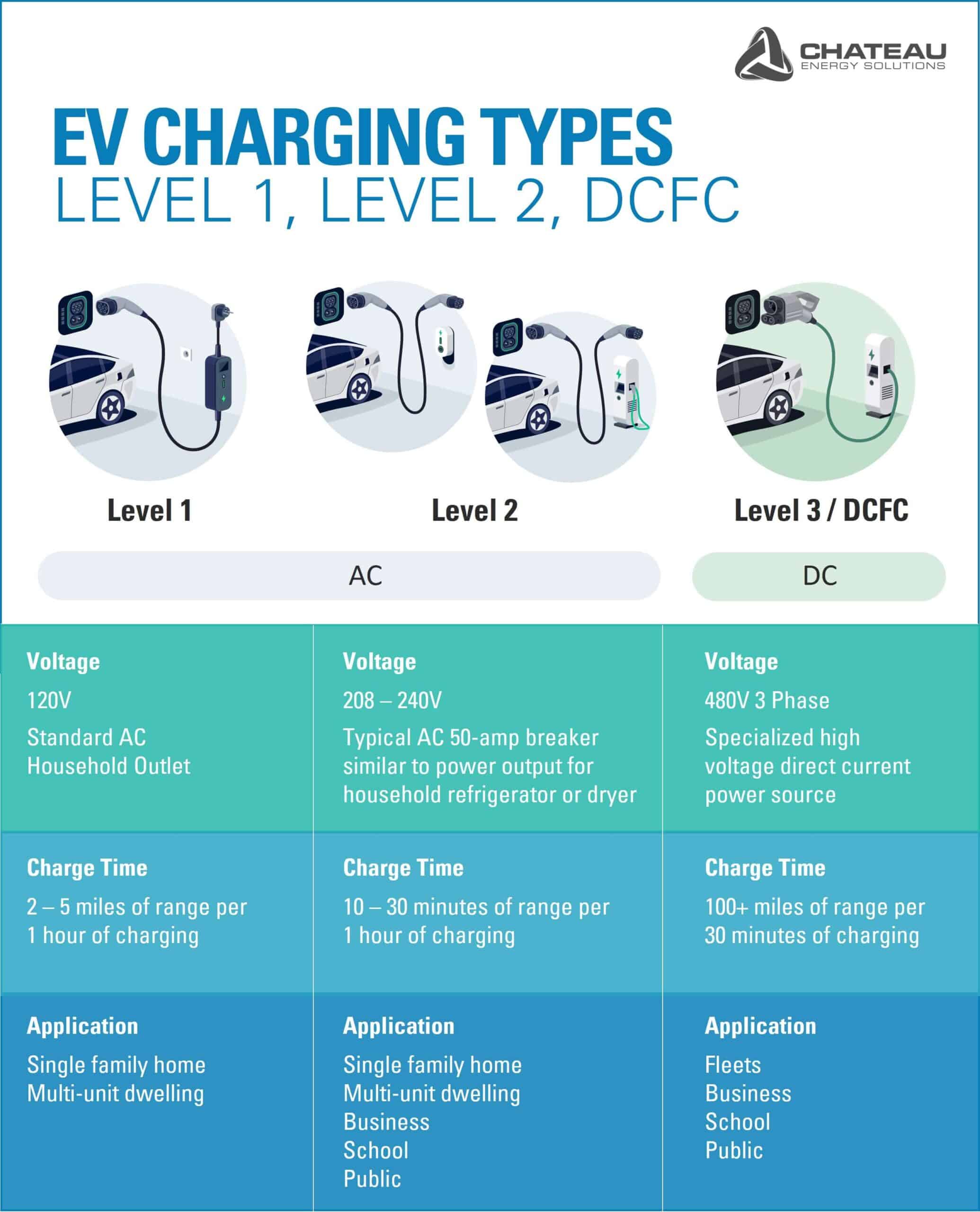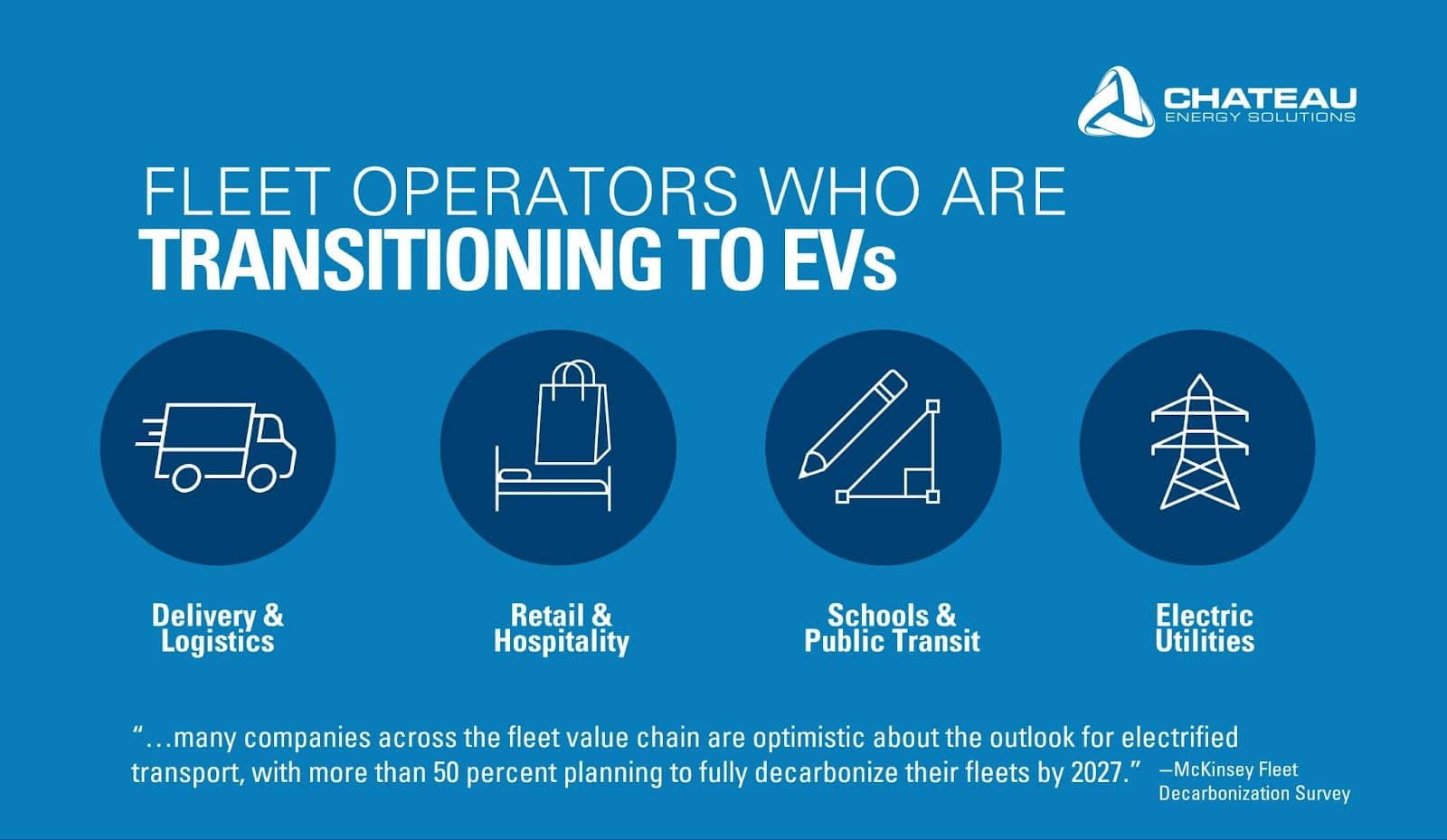
 Posted by Pam Hoddinott
Posted by Pam Hoddinott It’s hard to miss. Headlines showcasing a long list of e-commerce retailers, big-box retailers, package delivery organizations, snack food giants, disposal service operators, and even communications companies all transitioning to electric vehicle (EV) fleets. It is clear that the electrification of transportation – not just personal vehicles, but commercial fleets – is coming.
A big reason for this surge is that companies like Amazon and Frito-Lay have realized that switching to an electric fleet can lower fuel and maintenance expenses, meet compliance mandates, and boost brand image. However, one important aspect to understand is how you will charge your electric vehicle.
There are three levels of EV charging: Level 1, Level 2, and Level 3 or DC Fast Charging. Level 1 is the slowest charging process, Level 2 is faster, and Level 3 provides the fastest option for charging.

Let’s dive deeper into the different options for EV charging. There are three levels of electric vehicle charging, each with varying speeds of charging:
It is important to note that the actual charging time depends on the battery capacity of the EV, the charging equipment being used, and the charging rate that the EV is capable of accepting.
The sales of passenger electric vehicles are at a high, and commercial fleets are also starting to make strides toward decarbonization. “Research shows that 75 percent of the 200 largest US fleet operators—responsible for about 1.2 million vehicles—have committed to decarbonization targets for public fleets, and many are starting to invest”, according to McKinsey & Company.
EV charging infrastructure is becoming increasingly important as the number of electric vehicle fleets on the road continues to grow. There is a great opportunity for the electrification of transportation to be had by a variety of organizations:
Delivery and Logistics Companies: Delivery and logistics companies who use EVs for their operations can benefit from Level 3 chargers, which can quickly recharge their vehicles, reducing downtime and increasing the efficiency of their operations.
Retail and Hospitality Businesses: Retail and hospitality businesses, such as hotels, restaurants, and shopping centers, can offer Level 3 charging as a value-added service to attract EV drivers, who are often on longer trips and in need of a fast charge.
School and Public Transit: In the case of school buses, the bus routes and the amount of time the bus is unused between routes will determine the best level of charging needed. School buses must always be ready to go should there be an unexpected schedule change. This is why most electric school bus needs are met when Level 2 chargers are paired with a DCFC. This provides the option of opportunity charging between routes in addition to emergency charging.
Electric Utilities: Electric utilities can benefit from installing Level 3 chargers by supporting the growth of EVs and increasing the demand for electricity, which can help support their business growth.

There are several benefits that companies can reap from transitioning to an electric vehicle fleet, some of which include the following:
Reduced operating costs: EVs have lower operating costs compared to traditional gasoline-powered vehicles, as electricity is cheaper than gasoline, and maintenance costs for EVs are lower. A recent study, Comprehensive Total Cost of Ownership Quantification for Vehicles with Different Size Classes and Powertrains, by the U.S. Department of Energy Office of Scientific and Technical Information (OSTI) found that the total cost of ownership (TCO) of an EV has lower repair and maintenance costs than an internal combustion engine.
Improved environmental impact: EVs produce zero tailpipe emissions, which can help companies improve their environmental impact and meet sustainability goals.
Enhanced brand image: By transitioning to an electric fleet, companies can show their commitment to sustainability and reduce their carbon footprint, which can enhance their brand image and reputation.
The adoption of electric vehicles in the commercial sector in the United States has been growing in recent years. This growth can be attributed to several factors, including the increasing availability of EVs, declining costs, and incentives offered by the government.
We can safely expect the commercial EV market in the United States to grow at a substantial rate in the coming years, driven by the increasing demand for environmentally friendly transportation options. Major players in the transportation and delivery industries, such as FedEx and UPS, have already started the transition.
Additionally, the current Administration has expressed its commitment to promoting the widespread adoption of EVs, including in the commercial sector. This has led to increased investment in charging infrastructure and the creation of incentives for companies to transition to EVs.
This growth is certain to continue in the coming years as the adoption of EVs becomes more widespread. However, many fleet owners still need to answer a few questions: “What do I need to consider when electrifying my EV fleet?” and “Who has deep experience to help deploy my EV fleet?”
Chateau Energy Solutions Making Energy an Asset®
Ready to get started on the path to energy efficiency and sustainability?